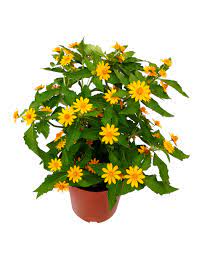
The evolution of sunflowers, from their wild ancestors to the diverse array of cultivars we know today, is a tale of human ingenuity and the power of selective breeding and hybridization. Over centuries of cultivation, farmers, botanists, and horticulturalists have meticulously selected and crossed sunflower varieties to enhance desirable traits such as size, color, and disease resistance, resulting in the magnificent blooms that adorn gardens, fields, and landscapes around the world. In this captivating narrative, we delve into the rich history and science behind the selective breeding and hybridization of sunflowers, tracing the journey of these iconic flowers from their humble beginnings to their status as horticultural marvels.
**Origins of Sunflower Domestication**
The domestication of sunflowers can be traced back to ancient civilizations in the Americas, where indigenous peoples cultivated wild sunflower species for their edible seeds and oil-rich fruits. Archaeological evidence suggests that sunflowers were first domesticated in present-day Mexico and the southwestern United States as early as 3000 BCE, with early agricultural societies selecting plants with desirable traits such as larger seeds, improved taste, and higher oil content.
As sunflower cultivation spread across the Americas, different indigenous tribes developed distinct varieties adapted to local growing conditions and culinary preferences. Sunflowers played a vital role in indigenous cultures, serving as food sources, ceremonial offerings, and symbols of fertility and abundance.
**Selective Breeding in Early Cultivation**
The process of selective breeding, whereby plants with desirable traits are intentionally crossed to produce offspring with similar characteristics, played a central role in the early cultivation of sunflowers. Indigenous farmers selectively saved seeds from plants with larger, tastier seeds or more abundant blooms, gradually improving the overall quality and productivity of sunflower crops over generations.
Selective breeding also led to the development of diverse sunflower varieties adapted to different environmental conditions and growing seasons. In regions with short growing seasons or harsh climates, early farmers selected for early-maturing varieties that could produce viable seeds before the onset of frost or drought. Conversely, in more temperate climates, farmers favored long-season varieties capable of producing larger, more robust plants and flower heads.
**Introduction of Hybridization Techniques**
The advent of modern agricultural science in the 19th and 20th centuries brought about significant advancements in sunflower breeding techniques, including the introduction of hybridization methods to create new cultivars with specific traits. Hybridization involves crossing two or more genetically distinct parent plants to produce offspring with desirable characteristics, such as disease resistance, uniformity, or improved yield.
In the early 20th century, pioneering plant breeders began experimenting with hybrid sunflower varieties, crossing diverse parental lines to create hybrids with superior traits. Hybrid sunflowers offered advantages such as increased vigor, uniformity, and productivity, making them attractive options for commercial agriculture.
**Modern Breeding Programs**
Today, sunflower breeding programs around the world continue to build upon the legacy of selective breeding and hybridization, employing advanced genetic techniques to develop new cultivars tailored to the needs of farmers, gardeners, and consumers. Plant breeders use a combination of traditional breeding methods, molecular genetics, and biotechnology to identify and introgress desirable genes from wild and cultivated sunflower species into elite breeding lines.
Modern sunflower cultivars are bred for a wide range of traits, including:
1. **High Yield:** Varieties that produce abundant, uniform seed heads for commercial oilseed production.
2. **Disease Resistance:** Hybrids with enhanced resistance to common pests and diseases, reducing the need for chemical pesticides.
3. **Earliness:** Early-maturing varieties suited to regions with short growing seasons or for double cropping with other crops.
4. **Ornamental Value:** Sunflowers bred for their striking colors, unique forms, and suitability for cut flower arrangements and ornamental gardens.
**Challenges and Opportunities**
Despite the remarkable progress achieved through selective breeding and hybridization, sunflower cultivation faces ongoing challenges such as climate change, emerging pests and diseases, and shifting market demands. Plant breeders must continually adapt and innovate to develop resilient, sustainable sunflower varieties that can thrive in changing environmental conditions while meeting the needs of growers and consumers alike.
Additionally, there are exciting opportunities on the horizon for leveraging emerging technologies such as genome editing and marker-assisted selection to accelerate the breeding process and introduce novel traits into sunflower cultivars. By harnessing the power of genetics and genomics, researchers hope to unlock the full potential of sunflowers as versatile crops with applications ranging from food and feed to biofuels and bioremediation.
**Conclusion**
The story of selective breeding and hybridization of sunflowers is a testament to human creativity, perseverance, and innovation in the pursuit of agricultural excellence. From their humble origins in ancient civilizations to the cutting-edge breeding programs of today, sunflowers have undergone a remarkable transformation, evolving into a diverse array of cultivars that enrich our lives with their beauty, versatility, and nutritional value. As we continue to nurture and steward sunflower diversity for future generations, we honor the legacy of those who came before us and embrace the boundless potential of nature’s radiant beauties to sustain and inspire us in the years to come.









